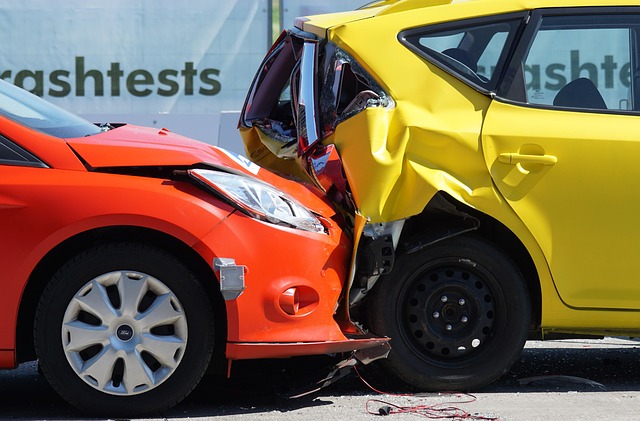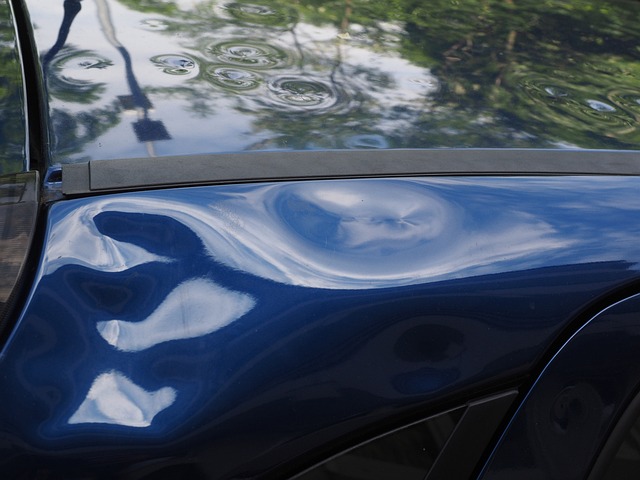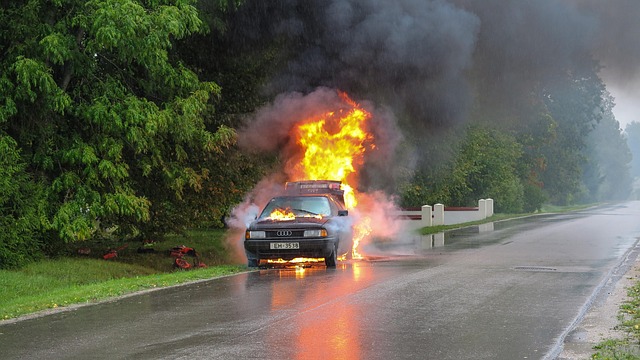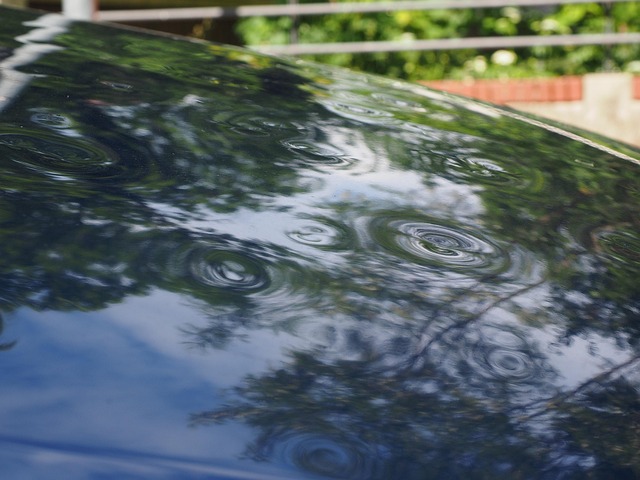Collision and comprehensive auto insurance protect drivers differently. Collision covers vehicle damage from accidents, but excludes theft, vandalism, or natural disasters. Comprehensive offers broader protection against various risks including storms, theft, and vandalism, ideal for high-risk drivers seeking enhanced peace of mind. For high-risk drivers, comprehensive coverage is crucial as their elevated accident risk can lead to frequent claims that deplete collision-only policies. Understanding these differences helps drivers make informed decisions based on their needs and budget.
High-risk drivers, due to their increased likelihood of accidents and claims, require specialized insurance coverage. This article delves into the nuances of collision and comprehensive auto insurance, clarifying key differences vital for high-risk drivers. We explore why collision coverage is essential for mitigating financial risks associated with accidents, while comprehensive insurance offers broader protection against various non-collision events. Understanding these policies helps high-risk drivers make informed choices, ensuring adequate protection on the road.
Understanding Collision and Comprehensive Insurance: What's the Difference?

Collision and comprehensive auto insurance are two distinct types designed to protect drivers in different ways. Collision coverage pays for repairs or replacement if your vehicle collides with another object, such as a car or fence, or if it rolls over. It doesn’t cover damage from events like theft, vandalism, or natural disasters—these fall under comprehensive insurance.
Comprehensive insurance, on the other hand, covers a wider range of perils beyond collisions. This includes damage from acts of nature like storms or floods, as well as issues like animal strikes, falling objects, and even theft or vandalism. While collision coverage is typically required by lenders for vehicles with outstanding loans or leases, comprehensive insurance is optional but can be crucial for high-risk drivers who want broader protection against unexpected events.
Who Are High-Risk Drivers and Why Do They Need Specialized Coverage?

High-risk drivers are individuals who engage in activities or possess characteristics that significantly elevate their chances of being involved in a car accident. This category includes young, inexperienced drivers, those with multiple traffic violations, and even drivers operating vehicles with poor safety records. Such drivers often require specialized coverage due to the increased likelihood of claims against their insurance policies.
While collision insurance covers damages resulting from accidents, it typically focuses on repairing or replacing the involved vehicles. Comprehensive auto insurance, on the other hand, offers broader protection by covering various incidents beyond collisions, such as theft, natural disasters, and vandalism. For high-risk drivers, comprehensive coverage can be invaluable as their elevated risk may lead to frequent claims that could potentially exhaust collision-only policies. Therefore, specialized coverage ensures they are adequately protected against financial strains resulting from unexpected events.
The Importance of Collision Coverage for High-Risk Drivers

For high-risk drivers, collision coverage is more than just an optional add-on; it’s a crucial safety net. These drivers often face higher premiums due to their increased likelihood of accidents and potential claims. Collision insurance specifically covers damages to your vehicle in case of a crash, regardless of fault. This is where it differs from comprehensive auto insurance, which includes collision but also protects against broader risks like theft, natural disasters, and vandalism.
High-risk drivers benefit significantly from collision coverage as it can shield them from substantial financial burdens resulting from accidents. Without it, even minor fender benders could lead to out-of-pocket expenses for repairs or replacement, adding stress to an already precarious situation. Thus, choosing the right collision insurance policy is essential to ensure these drivers are adequately protected on the road.
Exploring Comprehensive Auto Insurance: Beyond Collision Protection

Collision and comprehensive auto insurance are two distinct types designed to protect vehicle owners in different ways. While collision coverage kicks in during accidents involving another vehicle or stationary object, comprehensive insurance provides a broader range of protection against non-collision events like theft, vandalism, natural disasters, and more.
Understanding the difference is crucial for high-risk drivers who may require more than just collision protection. Comprehensive auto insurance can be seen as a game-changer, offering peace of mind by covering various unforeseen circumstances that could leave your vehicle damaged or even totaled, beyond what a typical collision policy addresses.
Common Misconceptions About Collision vs. Comprehensive Policies

Many drivers often confuse collision and comprehensive auto insurance, assuming they are interchangeable. However, these two types of coverage serve distinct purposes. Collision insurance is designed to protect you financially in the event of a crash, covering repairs or replacement costs, regardless of fault. It’s a good fit for high-risk drivers as it ensures they’re covered if they cause an accident. On the other hand, comprehensive auto insurance goes beyond collision and covers a wide range of incidents, including theft, natural disasters, and vandalism. While collision policies focus on physical damage, comprehensive policies offer broader protection by addressing various unforeseen events.
A common misconception is that comprehensive coverage is always superior. Not necessarily so; if your vehicle is relatively new and you’re not concerned about its age or value, a collision-only policy might suffice. Comprehensive insurance becomes more valuable when you own an older car with lower residual value or face higher repair costs due to specialized or rare parts. Understanding these distinctions enables high-risk drivers to make informed choices, tailoring their coverage to meet their unique needs and budget.
Factors to Consider When Choosing the Right Coverage for High-Risk Drivers

When high-risk drivers are in the market for auto insurance, understanding the nuances between collision and comprehensive coverage is paramount. Collision insurance specifically covers damages arising from accidents, paying for repairs or replacement if your vehicle collides with another object or another vehicle. It’s a crucial component for drivers who frequently find themselves in situations that could lead to collisions, such as navigating busy city streets or driving in adverse weather conditions.
Comprehensive auto insurance, on the other hand, offers broader protection by covering damages beyond collisions. This includes harm from theft, vandalism, natural disasters, and even animal encounters. For high-risk drivers who want peace of mind knowing they’re protected against a wider range of unexpected events, comprehensive coverage can be more suitable. It ensures that unforeseen circumstances don’t leave them burdened with significant out-of-pocket expenses for vehicle repairs or replacements.
Real-Life Scenarios: When Does Each Policy Come in Handy?

In real-life scenarios, collision insurance is your go-to when you’re dealing with direct and immediate damage to your vehicle due to a crash. This policy covers repairs or replacements if you’re at fault in an accident. Imagine you’re driving on a winding road, lose control, and end up veering off the edge into a barrier—this is where collision coverage kicks in to help repair or replace your damaged car.
On the other hand, comprehensive auto insurance is designed for a wider range of unforeseen events. It includes protection against theft, vandalism, natural disasters, and even animal-related damage. For instance, if your car is stolen while parked at a restaurant or damaged by falling debris during a storm, comprehensive coverage will step in to cover these unexpected incidents. Understanding the differences between collision and comprehensive insurance ensures drivers are prepared for various eventualities on the road.
Navigating Claims: A Step-by-Step Guide for High-Risk Drivers

When high-risk drivers face a collision, understanding their insurance options and claims process is crucial. The first step is to assess whether your policy covers the incident – this distinction lies between collision vs. comprehensive auto insurance. Collision coverage specifically targets damages from accidents, while comprehensive insurance steps in for various other events like theft, vandalism, or natural disasters.
If you’re entitled to collision coverage, navigate the claims process by contacting your insurer promptly. Document all details of the accident and gather necessary information from others involved. Prepare a list of repairs needed, along with quotes from trusted repair facilities. Lastly, stay in communication with your insurance provider throughout the repairs, ensuring they have all required documents for efficient processing.
